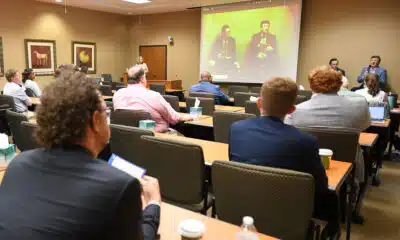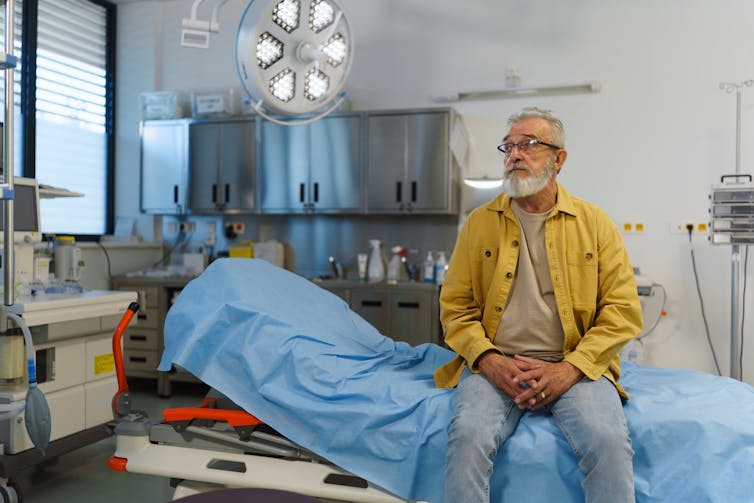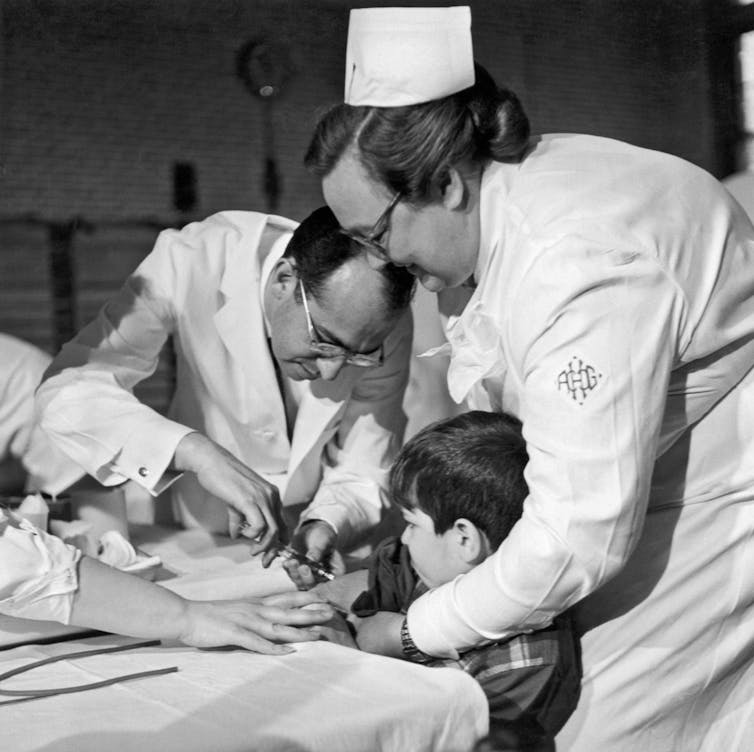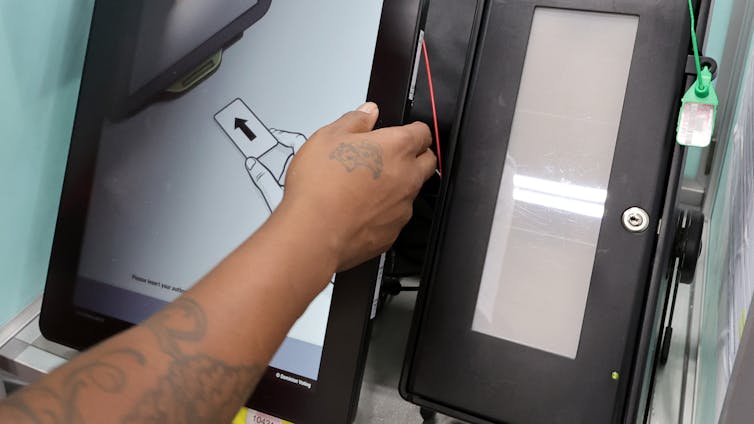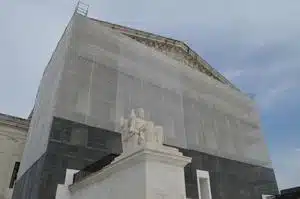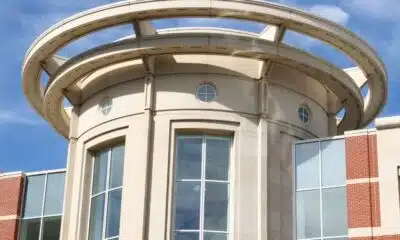
Myrsini Mamoli
Myrsini Mamoli, Georgia Institute of Technology
Here in Atlanta, the Jimmy Carter Presidential Library and Museum has been part of my daily life for years. Parks and trails surrounding the center connect my neighborhood to the Martin Luther King Jr. National Historical Park downtown and everything in between.
At the end of December 2024, thousands of people walked to the library to pay their respects to the former president as he lay in repose. The cold, snow and darkness of the evening were a stark contrast to the warmth of the volunteers who welcomed us in. Our visit spiraled through galleries exhibiting records of Carter’s life, achievements and lifelong work promoting democracy around the world.
U.S. presidents have been building libraries for more than 100 years, starting with Rutherford B. Hayes. But the urge to shape one’s legacy by building a library runs much deeper. As a scholar of libraries in the Greek and Roman world, I was struck by the similarities between presidential and ancient libraries – some of which were explicitly designed to honor deceased sponsors and played a significant role in their cities.
Trajan’s library
The Ulpian Library, a great library in the center of Rome, was founded by Emperor Trajan, who ruled around the turn of the second century C.E. Referenced often by ancient authors, it could have been the first such memorial library.
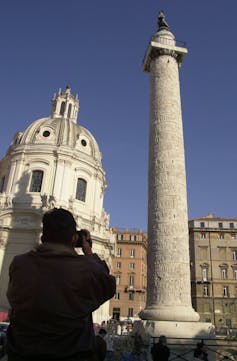
AP Photo/Pier Paolo Cito
Today, someone visiting Rome can visit Trajan’s Column, a roughly 100-foot monument to his military and engineering achievements after conquering Dacia, part of present-day Romania. A frieze spirals from bottom to top of the column, depicting his exploits. The monument now stands on its own. Originally, however, it was nestled in a courtyard between two halls of the Ulpian Library complex.
Most of what scholars know about the library’s architecture comes from remains of the west hall, an elongated room almost 80 feet long, whose walls were lined with rectangular niches and framed by a colonnade. The niches were lined with marble and appear to have had doors; this is where the books would have been placed. Writers from the first few centuries C.E. describe the library having archival documents about the emperor and the empire, including books made of linen and books bound with ivory.
Trajan dedicated the column in 113 C.E. but died four years later, before the library was complete. Hadrian, his adoptive son and successor, oversaw the shipment of Trajan’s cremated remains back to Rome, where they were placed in Trajan’s Column. Hadrian completed the surrounding library complex in 128 C.E. and dedicated it with two identical funerary inscriptions to his adopted parents, Trajan and Plotina. Scholars Roberto Egidi and Silvia Orlandi have argued that Trajan’s remains could later have been transferred from the column into the library hall.
Memorial model
Either way, I would argue that Trajan’s decision to have his remains included in the library complex, instead of in an imperial mausoleum, established a model adopted by other officials at a smaller scale. In the eastern side of the Roman empire – what is now Turkey – at least two other library-mausoleum buildings have been identified.
One is the library at Nysa on the Maeander, a Hellenistic city named for the nearby river. Under the floor of its entry porch is a sarcophagus with the remains of a man and a woman, possibly the dedicators, that dates to the second century C.E., the time of Hadrian’s reign.
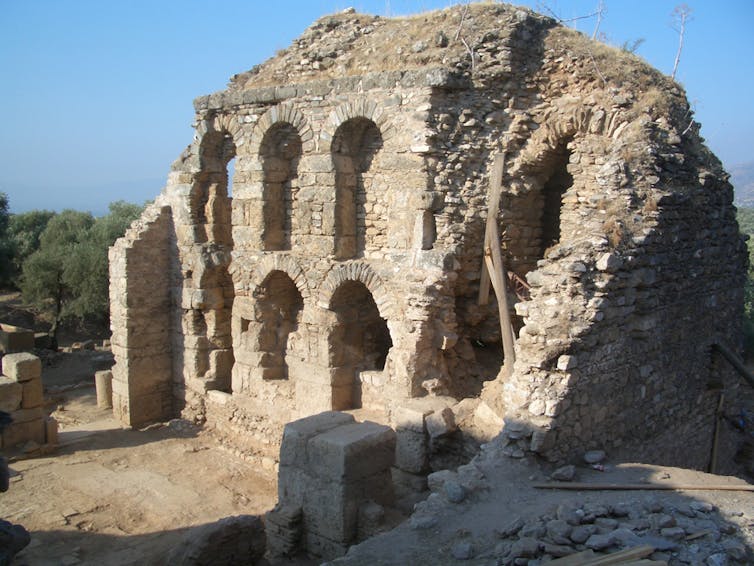
Myrsini Mamoli
Another is the Library of Celsus, the most recognizable ancient library today, found in the ancient city of Ephesus. Named after a regional Roman consul and proconsul during the reign of Trajan, the building was founded by Celsus’ son, designed as both a place of learning and a mausoleum.
The library’s ornate, sculpted facade contained life-size female statues, making it an immediately recognizable landmark. Inscriptions identify the statues as the personifications of Celsus’ character, elevating him into a role model: virtue, intelligence, knowledge and wisdom.
Upon entering the room, the funerary character of the library became quite literal. The hall was designed like the Ulpian Library, but a door gave access to a crypt underneath. This held the marble sarcophagus with the remains of Celsus, the patron of the library. The sarcophagus itself was visible from the hall, if one stood in front of the central apse and looked down through two slits in the podium.
An endowment covered the library’s operational expenses in ancient times, as well as annual commemorations on Celsus’ birthday, including the wreathing of the busts and statues and the purchasing of additional books.

Myrsini Mamoli
Power and knowledge
These two provincial libraries highlight how sponsors hoped to be associated with the virtues a library fosters. Books represent knowledge, and by dedicating a library, one asserted his possession of it. Providing access to learning was an instrument of power on its own.
Beyond the handful of memorial libraries, many other ancient Roman public libraries were great cultural centers, including the Forum of Peace in Rome, dedicated by Emperor Vespasian; the Library of Hadrian in Athens; and the Gymnasium in Side, a city in present-day Turkey.
The most magnificent libraries combined access to manuscripts and artworks with spaces for meetings and lectures. Several had great leisure areas, including landscaped sculptural gardens with elaborate water features and colonnaded walkways. Literary sources and material evidence testify to the treasures that were held there: busts of philosophers, poets and other accomplished literary figures; statues of gods, heroes and emperors; treasures confiscated as spoils of war and exhibited in Rome.
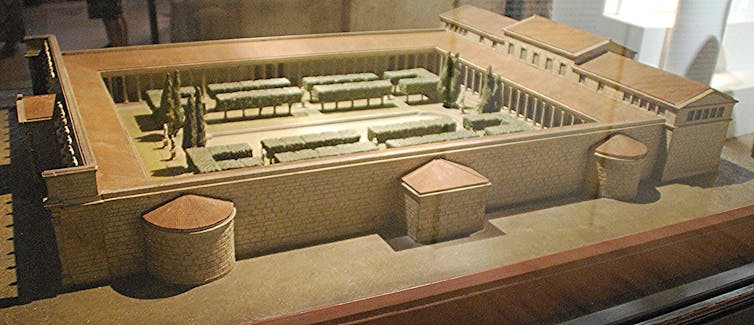
Joris/Wikimedia Commons, CC BY-SA
Like the Ulpian Library itself, they continued the long tradition of Hellenistic public libraries, established by the most famous library of antiquity: the Library of Alexandria. Founded and lavishly endowed by the Hellenistic kings of Egypt, the Ptolemies, the building was meant to portray the king as a patron of intellectual activities and a powerful ruler, collecting knowledge from conquered civilizations.
In ancient Greece and Rome, anybody who could read had access to public libraries. Rules of use varied: For example, literary sources imply that the Ulpian Library in Rome was a borrowing library, whereas an inscription from the Library of Pantainos in Athens explicitly forbid any book to be taken out.
But these buildings were also meant to shape their sponsors’ legacies, portraying them as benevolent and learned. Presidential libraries in the United States today follow the same principle: They become monuments to the former presidents, while giving back to their local communities.
Myrsini Mamoli, Lecturer of Architecture, Georgia Institute of Technology
This article is republished from The Conversation under a Creative Commons license. Read the original article.



